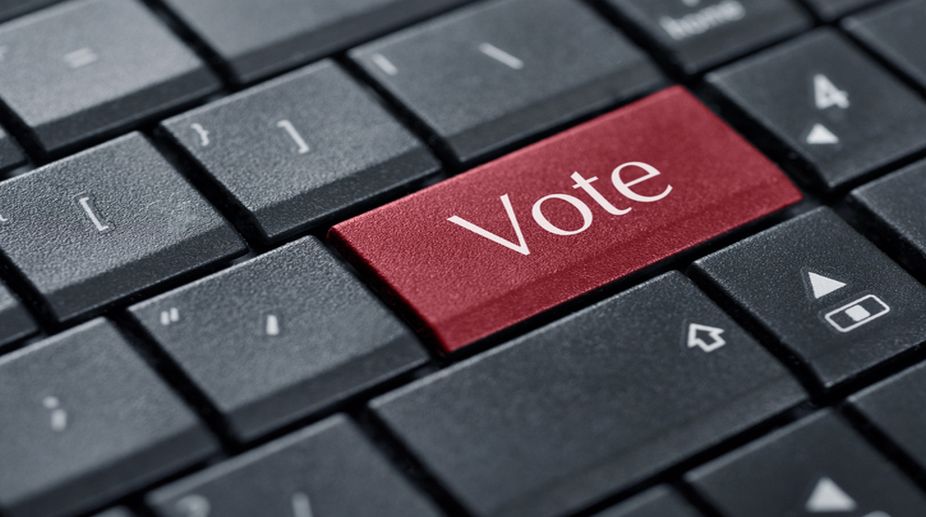Congress committing dacoity on rights of OBCs, SCs, STs: PM
“Wherever it (Congress) can do it, it will try to loot the claims of the SCs, STs and OBCs and give them to others,” said Modi.

Representational Image (PHOTO:
In the wake of the Bhartiya Janata Party emerging stronger, efforts for a realignment of forces are very much on the cards after the Assembly poll results. The non-BJP parties may have to think of unity if they plan to contain the saffron party, which is becoming a pan-national outfit overtaking the once dominant Congress. After all there are elections to eight more states in 2018 before the 2019 Lok Sabha polls and logic suggests that the opposition parties might put up a stiff fight.
In 2018 elections to Gujarat, Karnataka, Mizoram, Meghalaya, Nagaland, Himachal Pradesh and Tripura are scheduled. Prime Minister Narendra Modi has a personal stake in his home state, Gujarat. The BJP is keen to win Karnataka and Himachal Pradesh where the Congress and the BJP have alternated in power.
Bihar Chief Minister Nitish Kumar has already set the ball rolling at a recent book release function in Delhi by asking the opposition to not be merely reactive, but set and follow its own agenda. Significantly, he asked why shouldn’t Congress Vice President Rahul Gandhi take the lead in setting the agenda pointing out, "Why should they [BJP] set the agenda?
Kumar's remarks on opposition unity were shared by CPI-M General Secretary Sitaram Yechury, who said such unity should be on the basis of a common programme and not personalities. Nitish probably took this forward when he met Biju Janata Dal chief and Odisha chief minister Naveen Patnaik this week when he went to Odisha for the funeral of former Speaker Rabi Ray.
Advertisement
Nitish is keen to revive the Janata Dal which has split into many smaller parties including the BJD. Former Prime Minister Deve Gowda has also lent his support hinting that the regional satraps should come together to fight the BJP. The question is will Naveen Patnaik go along? He did not do so before the 2014 polls when such a move was made. He may be having second thoughts as the BJP has performed well defeating the BJD in Panchayat polls and becoming the major opponent in the state.
But before they make the much attempted efforts for a grand alliance at the national level to challenge the BJP, the first acid test comes during the presidential and vice-presidential elections scheduled for June-July. President Pranab Mukherjee and Vice President Hamid Ansari will be ending their terms then. The BJP wants to put up its own candidates for both the posts despite a gap between its strength and the required number of votes.
In the present atmosphere, a belligerent opposition is bound to put up a fight and perhaps nominate a joint candidate for both posts. This is not the first time the opposition has adopted such a strategy. On earlier occasions it had done so but it was the Congress-led UPA that was in power and the BJP that was in opposition. For instance in 2012, the BJP-led opposition had put up former Speaker P.A. Sangma against UPA candidate Pranab Mukherjee but the latter won with a handsome majority. The UPA had repeated Hamid Ansari for the vice presidential post while the NDA supported former Finance Minister Jaswant Singh. As expected Ansari won.
This time also Prime Minister Modi has not revealed his cards about who the NDA candidate will be but the consultations would begin soon. There are already several names like those of Speaker Sumitra Mahajan and Union miister M.Venkaiah Naidu doing the rounds. One thing is certain – the Prime Minsiter will zero in on a name acceptable or proposed by the RSS.
With a good performance in the recent Assembly polls, the BJP would have reduced the gap of 80,000 votes considerably. The BJP can get the votes from smaller parties like the TRS, AIADMK, BJD, YSR Congress and some north-eastern regional parties and others and get its candidates elected.
The million dollar question is if the opposition can come together to take on the BJP? There are inherent contradictions. If they are looking to the 2019 Lok Sabha polls, the first thiing is to have a common minimum programme acceptable to all the partners. The second thing is to have leadership. Who will lead the opposition? Can it be Rahul Gandhi? Can it be Mamata Banerjee? Can it be Naveen Patnaik? Can it be somebody else like Arvind Kejriwal? While all these leaders are providing lip service for opposition unity, none of them will accept the others as they are themselves aspiring for the top post. This could be a big drawback for opposition unity.
However, all these does not mean that the opposition will not go through the motions. In what form it will come, whether it will be fractured or full-fledged unity will be known by July. In fact Mamata had mobilised the opposition on the demonetisation issue but it was Nitish who backed out from a joint attack by supporting the move.
Prime Minister Modi and the BJP will be safe as long as the opposition remains fractured and there is no challenger. This is known to the opposition also but something makes them remain fractured. The jury is out on whether they can come together.
Advertisement